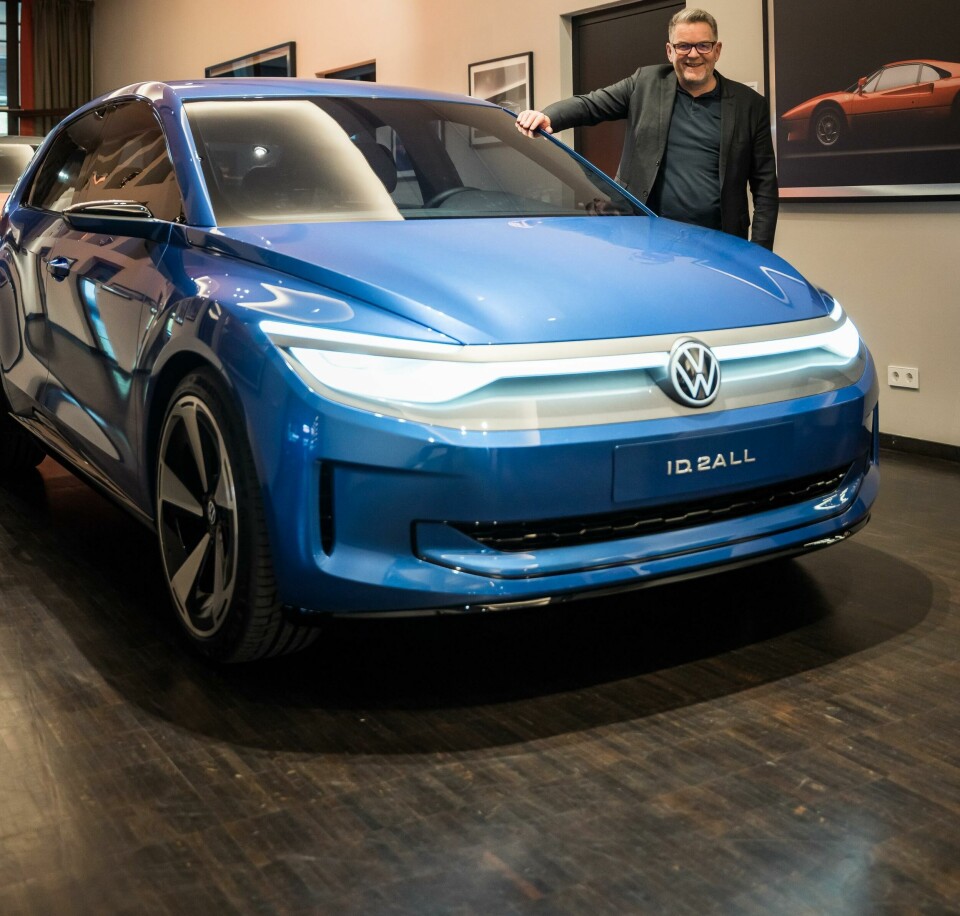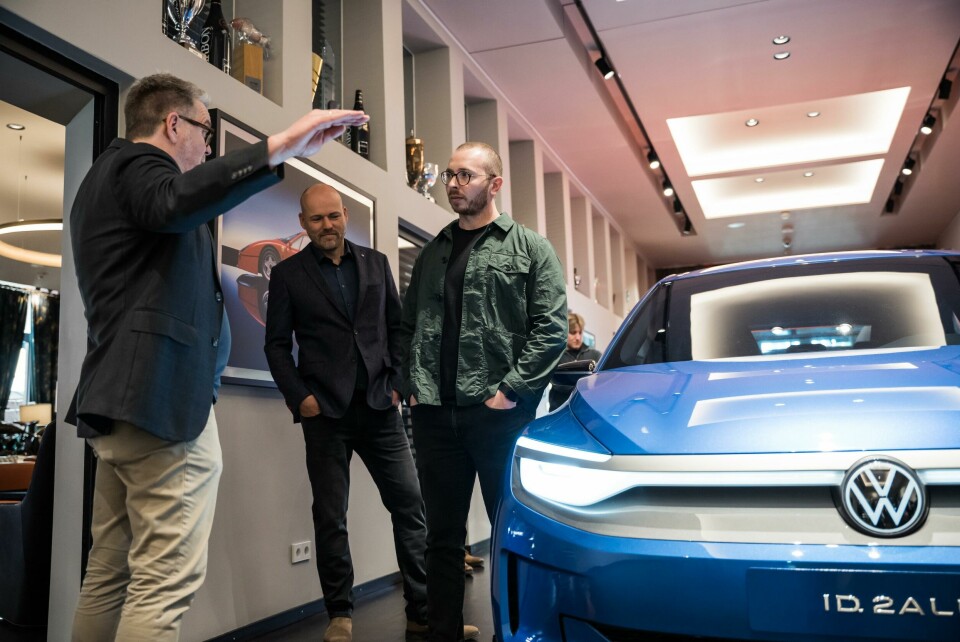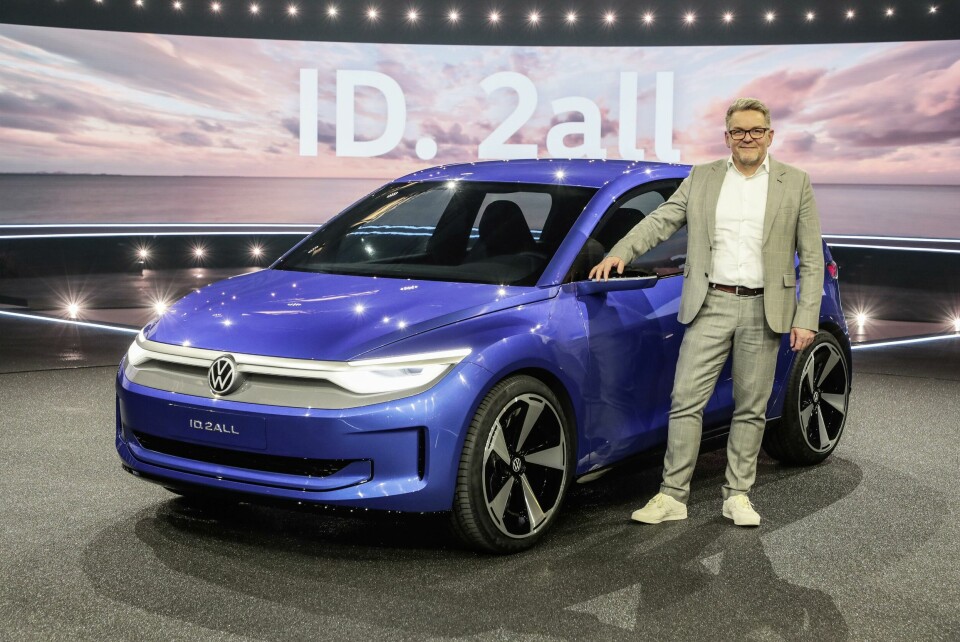
Interview: Andreas Mindt, head of design, Volkswagen
VW’s incoming design boss talks to Car Design News about EVs, design strategy and the transition from Bentley
Physical events are a great opportunity to catch up with familiar faces and grab time with senior figures who might otherwise be difficult to pin down. The inaugural Car Design Event held in Munich last week, led by the organisers of GTspirit.de, underlined this as top designers from VW, Hyundai Group and more gathered at the Motorworld museum.
Not long after starting his new role at Volkswagen, incoming head of design Andreas Mindt sat down with Car Design News over a coffee to discuss his approach to design and to learn more about the ID2.all concept car on show down the corridor of the drivers’ clubhouse away from the main museum floor.
How are you settling in since moving over from Bentley? It took us a little by surprise…
It was certainly a quick transition, probably the quickest I have ever experienced. Moving from Audi to Bentley previously, the process took about three months whereas this was more like a few weeks. But from the very first day, you immediately switch your brain to the new task at hand and it was exactly the same when I joined Volkswagen.
I began thinking about what to do with the brand – what the problems might be, what the opportunities are. I’m very optimistic and I am always looking for chances, not focussing on the risks. I understand there will always be challenges and you have to consider that, but I am very much oriented by the opportunities of design more than anything else.

What do you feel you bring to Volkswagen coming from a hyper-premium brand like Bentley; the casual observer might assume more of a premium touch.
It is a completely different customer group of course, but there is a similar kind of passion between these customers. They really know their stuff and are passionate about the respective brands. Part of what I can bring from Bentley is around the design process and strategy. Adrian Hallmark [Bentley CEO] is very much interested in that – what is this for, where is it coming from, what is our aim, how should it fit in the market? I learned this way of thinking and can bring this to Volkswagen. You can see that with the ID2.all, which hits the nail on the head in terms of fitting the market.
It’s not a supercar but it had that kind of reaction. I loved seeing that
The biggest difference is the difference between investment costs and single item costs. At Bentley, the single costs do not matter too much – we had a project where the main control knob on the dashboard was several thousand euros – but this was no problem at all because every customer wanted that. The investment was quite challenging however because you are making very few parts, so the process has to be super fast. You have to make a decision quickly, stick with it and not waste any money in the process. With the ID2.all the investment cost is much less of a challenge, but we still need to work quickly.
Are you saying we shouldn’t expect to see a gold-plated control knob in the production version of the ID. 2all, then… A shame!
I’m afraid not! The cost of the battery is what is expensive in EVs today and you cannot really avoid that right now.
We first saw it in Hamburg and now here in Munich. What’s the reaction been like?
The response we had from the audience was huge and I never expected that because it is not a car that is trying to set records with the most outrageous look, the most power etc. It is something that is designed for everyone. It’s not a supercar but it had that kind of reaction. I loved seeing that.

I suppose you could think of it as a supercar within its segment?
That’s a good point. It’s like the Golf GTI – it formed its own segment – so maybe we can create a new segment with this. I learned that at Bentley, to be on point and think about the strength of the brand, and that is our aim here with the ID2.all. We are really strong at what we do. We know what VW is and should be, and this is exactly what we think about when it comes to the design.
It sounds like it was more of a mindset that you brought over from Bentley.
Exactly – it’s a process thing. As volume carmakers we are limited by resources so you have to be spot on. You cannot play around too much – the ID.2all was done in only six weeks from when I started to the reveal in Hamburg.
A lot of show cars over exaggerate things, but we found some tricks to bring the same look to the production car
When did you get your hands on it, was there already progress before you joined?
There was a car in the works when I came on board but I effectively re-did it. The basic construction was the same, but I led the whole redesign – it’s my baby.
How much of a concept is the ID2.all? It looks quite close to production.
It is very close. I am really happy with the progress we have made and it will look pretty much the same as it does here in Munich today. Maybe we need to revisit this and do a side-by-side comparison when the production version is out to see if you can spot the differences!
This is important because with a lot of show cars you over exaggerate things, but we have found some tricks to bring the same look to the production car. That is the hardest part in many ways, but we are a good chunk of the way to getting it finished.
It is quite muscly – particularly in the flesh. Was this planned from the outset and how did you go about that considering the “car for all” mentality?
We always wanted a strong stance but we had to use some tricks to get there. We call it the delta between the head circle and the track – basically the line between the head of the driver in the window and the centre of the front wheel. Compared to performance brands we are always limited when it comes to this delta, so it is about creating an interesting design with the limitations between these two points.
We did this by playing with the body panel, which falls inside and back out to create this kind of muscle. At the front, there is another line that creates the front wheel arch – another trick because the front is flush. It is tough work and comes from 20 years of experience in design. As a newbie, you would really struggle to figure this out, let me tell you.
There is not a physical interior on display just yet, so what should we expect with the finished product?
We made a huge step here and “levelled down” all of the complicated elements. With the door, for example, the cheaper hard trim is lower down while the expensive, soft trim is up top. This is not necessarily a new approach but we have never done it to this degree before – when you sit in the car you will experience that.
The door handle is one single island too, rather than spreading it all over. It is very clean and gives you a great touch and feel. We deleted the cheap parts such as the ugly plastic shell around the pull handle as well, using a different system without a shell that is not only affordable but also delivers a new level of quality.























